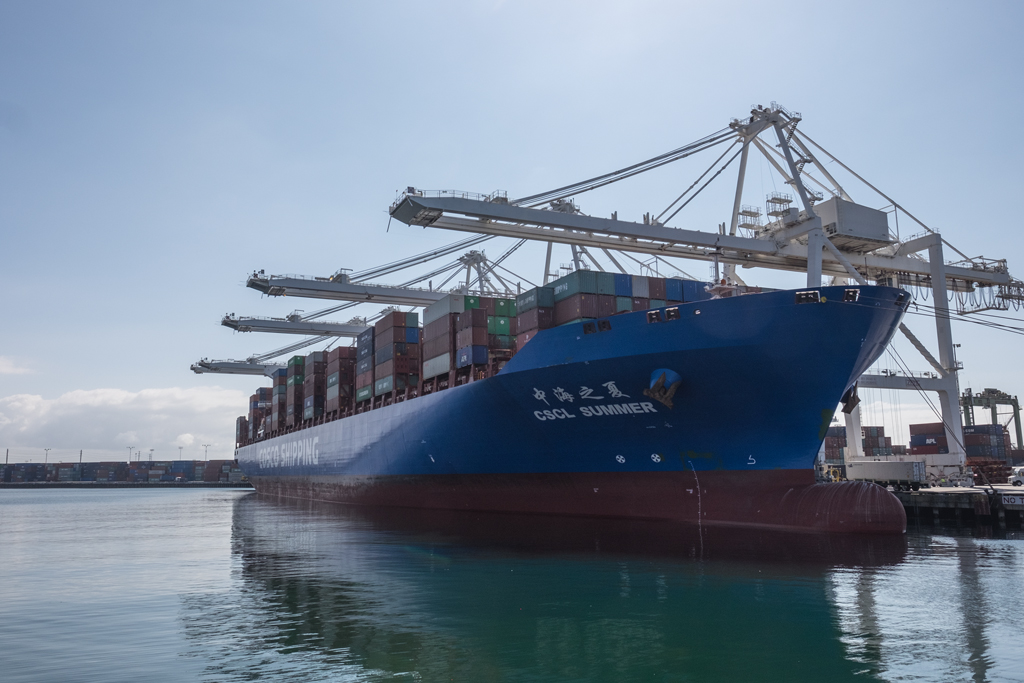PPAI Summit Gives Attendees An Up-Close Look At Port Of Long Beach

The seventh annual PPAI Product Responsibility Summit took its attendees out of the session hall on Wednesday and out on the open water. About 110 of Summit’s 175 attendees signed up for the optional addendum to the schedule, a guided boat tour of the Port of Long Beach.
Prior to the excursion on Wednesday, Ken Uriu, business development manager, import cargo, at the Port of Long Beach, closed the Summit schedule on Tuesday with an overview of the port’s operations. Uriu’s presentation painted a vivid picture of the tremendous scale of modern ocean freight, and on Wednesday’s tour he returned to guide attendees through an up-close look at the massive machines and infrastructure behind the facility.
“We educate groups like yours to showcase the cargo coming through our port,” says Uriu. “It’s the best port complex in the U.S., and every import coming through here means more jobs for the local community.”
The Port of Long Beach is the second busiest in the U.S. Served by 140 shipping lines and connected to 237 seaports around the world, more than $180 billion in trade passes through the port each year. Uriu gave tour participants an overview of the companies and services behind those numbers, and how the port and the shipping industry have evolved over the years and where it’s going.
As the tour progressed through the port facility, Uriu pointed out several of the development projects at the port. The Middle Harbor Redevelopment Project is converting two older shipping terminals into a technologically advanced container facility capable of moving twice the cargo while generating half the air pollution. The $1.31-billion project completed its first phase in April 2016, and its second phase should wrap up by 2020. The tour also passed under what will be the roadway of a new bridge that will span the port’s main channel. Replacing the existing Gerald Desmond Bridge, which offers 155 feet of vertical clearance, the $1.5 billion new bridge will provide 205 feet of clearance, allowing larger, more modern ships to the port’s back terminals.
The tour highlighted some less obvious aspects of an efficient port facility. On-dock rail speeds the shipment of goods from the port to customers around country. A redevelopment of an existing rail yard at the port is expected to expand the use of on-dock rail throughout the port, reducing truck trips and allowing the staging of 8,000- to 10,000-foot trains. Deep water allows larger ships to come into the facility. Long Beach already boasts one of the deepest main channels in North America, and a dredging project is extending and widening its channel to a minimum depth of 76 feet from two miles outside the harbor’s entrance.
“I thought it was fantastic,” says Tim Brown, MAS, executive director – operations, at Quality Certification Alliance, of the tour. “It was impressive to see the sheer enormity of it, and what they do to keep all of this cargo moving. The scale of it was amazing.”

